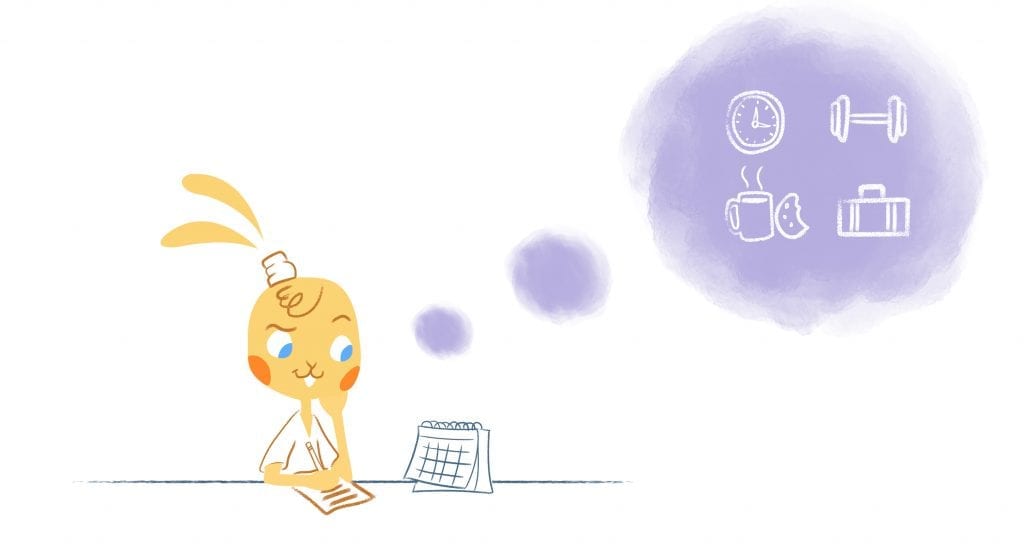

It’s crucial to attract and retain the best talent. A high salary isn’t enough, however. Employees want a comprehensive benefits package that fosters a productive workplace and supports their well-being.
In light of this, the following article explores 16 powerful benefits that you can offer to empower your team and boost productivity.
Flexibility is Key
When it comes to providing attractive benefits packages, flexibility is key. Among the flexible benefits that can be included are flexible work hours and remote working options. In addition to improving work-life balance, these benefits also increase productivity for employees.
1. Make flexible hours available.
It’s important to recognize that each person works best at a different time. As such, allowing employees to adjust their schedules and work during their most productive hours will allow them to maximize their output. Ultimately, this can result in higher productivity, improved work-life balance, and greater motivation.
Flexible work boosts productivity and helps attract top talent. In fact, according to Gartner’s 2021 Digital Worker Experience Survey, 43% of respondents said flexible working hours helped them be more productive. Moreover, 30% of respondents said they were more productive when they spent less or no time commuting.
2. Provide remote work benefits.
By offering remote working options, employees can choose their ideal workplace and avoid stressful commutes. Remote work has been shown to have a positive effect on employee satisfaction and well-being. Moreover, just 16% of white-collar workers said they were more productive in the office, compared to 46% at home, according to USA Today.
The reason? Remote work can reduce stress and improve work-life balance by eliminating commuting and providing employees with the flexibility to work from home. Employees can, in turn, experience increased job satisfaction, higher morale, and better mental health.
Invest in Well-being
Investing in employee well-being is essential not just for employee happiness but also for productivity and success. Employees who feel supported in their physical and mental health are more likely to perform at their best, make better decisions, and have higher levels of engagement at work. Promoting well-being leads to a more positive work environment, higher morale, and increased profits.
3. Be generous with PTO.
According to research, paid time off (PTO) allows employees to recharge and prevent burnout while also contributing to their overall well-being and productivity. Employees who spend sufficient time resting and relaxing are more focused, creative, and satisfied at work. As a result, employees and organizations can achieve higher productivity and success.
Even though 72% of employees say they would like unlimited paid time off (PTO), only 7% of organizations offer it. Despite countless studies showing that paid leave increases productivity, improves job satisfaction, and reduces turnover, the practice persists.
4. Give access to mental health support.
Mental health workshops and training programs aim to help employees develop the knowledge and skills they need to better manage their mental health. The result is an enhanced sense of self-awareness, improved coping mechanisms, and improved work-life balance, ultimately enhancing productivity and overall job satisfaction.
The World Health Organization estimates that mental health conditions, such as depression and anxiety, cost the global economy over $1 trillion annually in reduced productivity. However, a $1 investment in mental health treatment produces a $4 return on health and productivity.
5. Make health insurance available at a reasonable cost.
A comprehensive health insurance plan should be offered to employees to prioritize their health. In addition to covering physician visits and hospital stays, comprehensive health plans cover prescription drugs and preventive care. As a result, employees can receive the healthcare they need to stay healthy.
Comprehensive plans often include health insurance, employee wellness programs, dental and vision coverage, and mental health services.
Moreover, one study found that organizations offering health insurance to their employees experience higher productivity, retention, and profitability.
Fuel Professional and Personal Growth
Investing in your employees’ professional development isn’t just about checking a box. In addition to equipping your team with skills and knowledge, it shows your commitment to their development both in and out of the workplace. Here’s how you can stand out:
6. Offer professional development opportunities.
- Providing leadership development to all. You can expand your talent pool by offering leadership training beyond management positions. Employees will find these skills essential, whether in conflict resolution, project planning, or communication.
- Providing financial support for growth. Provide financial assistance to employees for certifications or even university courses to help them achieve their professional goals.
- Mentorship and upskilling. Allow employees to take on greater responsibilities and gain valuable mentorship to expand their skill sets.
- Continuous learning culture: Empower employees with access to external learning resources, such as LinkedIn Learning, and internal education programs.
7. Help with your team’s student loans.
Student loan debt is common among today’s workforce. However, tuition assistance benefits your employees and attracts motivated talent seeking to expand their skills and knowledge. This is highlighted in a LinkedIn report stating that 90% of employees stay with companies that invest in their learning. You can demonstrate your commitment in the following ways:
- Tuition reimbursement. Reimburse employees for approved coursework to reduce the financial burden of education.
- Student loan repayment: Directly contribute to employees’ student loans, an increasingly valuable benefit among younger generations.
- Learning & development stipends. Consider allocating funds for employees to pursue professional or personal development opportunities.
Balance and Support
The key to overall well-being is maintaining a balanced daily life. Maintaining physical and mental health and nurturing relationships is part of finding harmony in work and personal life. When individuals achieve this balance, they can lead fulfilling lives and receive the support they need to cope with life’s challenges.
Listed below are some ways you can assist your team;
8. Have favorable parental and family leave policies.
According to UNICEF (United Nations Children’s Fund), the first 1,000 days of a child’s life have a lasting impact on their well-being. Maternity leave is commonly 12 weeks, but in reality, parents need more time with their newborns or newly adopted kids.
Therefore, you should implement generous policies for parental and family leave. These policies could include extended parental leave and flexible work schedules, plus lactation rooms and parenting support groups for new parents. These initiatives support employees in maintaining a healthy work-life balance and contribute to a more inclusive, supportive, and productive work environment.
9. Offer childcare discounts or on-site facilities.
Providing childcare discounts or on-site facilities helps employees feel secure knowing their children are well looked after while they work. As a result, employees are less stressed and financially burdened due to childcare expenses and can focus more fully on their work, resulting in increased productivity.
You may also want to consider eldercare options. When employees have aging parents or relatives, eldercare options can greatly benefit them. By offering flexible work hours, caregiver support groups, and eldercare services, companies can enhance their employees’ well-being and allow them to focus on their work more effectively.
According to a Care survey, 82% of respondents say child and senior care benefits boost productivity.
Teamwork Makes the Dream Work
There’s a reason the saying “there’s no ‘I’ in team” exists. Teamwork can boost productivity and achieve success beyond just feeling good. This is because it increases efficiency, builds stronger bonds, and reduces stress.
10. Encourage activities that build teamwork and fun.
Through engaging team-building activities, you can strengthen bonds and promote communication within your team.
For example, team-building activities such as the “Escape Room Challenge” foster creativity and problem-solving skills in team members. In this activity, team members are trapped in a room and must solve riddles and puzzles to escape. This not only encourages collaboration and communication but also challenges individuals to think outside the box and come up with innovative ideas.
Additionally, the “Marshmallow Tower Challenge ” promotes creativity and problem-solving. Teams build the tallest tower using spaghetti sticks, tape, and marshmallows. For this activity to be successful, your team will need strategic thinking, resourcefulness, and teamwork.
11. Seek out philanthropic opportunities.
Participating in philanthropic activities, such as volunteering, benefits not only the community but also employee morale. Giving back to the community and making a difference fosters a sense of purpose and fulfillment in employees’ work. As a result, job satisfaction, team bonds, and pride in belonging to an organization that values social responsibility can be enhanced.
In addition, one study found that workers whose companies included them in their policies increased their productivity by 13%.
Financial Security Matters
An inability to manage one’s finances can have many negative consequences. The constant worry over paying bills or meeting basic needs can lead to anxiety and stress. As a result, individuals may be unable to invest in education or pursue new career paths, limiting their opportunities for personal and professional growth.
12. Compensate your employees competitively.
Ensure that your employees receive fair compensation that keeps pace with inflation. Why? According to Indeed research, 81% of workers feel more engaged when paid fairly, and 82% feel more productive.
Ideally, employees thrive when they feel fairly compensated, so better compensation is the cornerstone of an effective benefits package.
13. Provide financial planning and money management services.
Financial wellness programs and access to financial advisors can significantly improve employees’ financial security. By educating employees on budgeting, debt management, and investment strategies, these programs empower them to make informed financial decisions.
As employees gain control over their finances, they can reduce stress, save more, and work towards long-term financial goals, ultimately contributing to a more productive and engaged workplace.
Beyond the Basics
Need more ideas? You can offer your employees three unique benefits to maximize their productivity.
14. Create a pet-friendly workplace.
Provide a pet-friendly work environment (where appropriate) to cater to those with fur babies. An employee-friendly workplace can boost productivity. Evidence shows that having pets at work can reduce stress levels, increase employee morale, and improve workplace satisfaction.
Pets can also add to a relaxed and enjoyable work environment, increasing employee collaboration and creativity.
15. Provide employee assistance programs.
Employee Assistance Programs (EAPs) offer confidential and supportive resources to help employees deal with personal difficulties. They offer professional assistance and guidance, promoting overall well-being and work-life balance, whether it’s mental health issues, financial stress, or family problems.
Overall, EAPs enable employers to demonstrate their commitment to employee welfare and foster a productive, engaging work environment.
16. Recognize individuals on a personal level.
Give heartfelt and personalized recognition to individuals who have contributed to the organization’s success. Recognition can be a highly effective tool for retaining and engaging employees. When employees feel recognized and valued for their contributions, they are more motivated, satisfied, and loyal, which increases productivity and retention rates.
In fact, according to one survey, 37% of employees said regular personalized recognition would improve their performance.
Ultimately, personalized recognition develops a positive work culture and creates a sense of belonging among employees, encouraging them to stay committed to their organization.
Final Words of Advice
With these benefits, you can cultivate a working environment that fosters happiness, health, and productivity. Remember that a strong benefits package invests in the company’s greatest asset: its employees.
FAQs
How can employee benefits improve productivity?
In addition to improving employee well-being, employee benefits help motivate and engage employees. Here’s why;
- Reduced stress. Employers can reduce stress associated with finances and health concerns through benefits like health insurance and financial wellness programs.
- Improved morale. Benefit packages boost employee morale and satisfaction, increasing motivation and productivity.
- Better work-life balance. Flexible work arrangements and childcare assistance help employees manage personal commitments without sacrificing their work quality through benefits that support work-life balance.
- Talent attraction and retention. Providing competitive benefits attracts top talent and encourages them to stay with the company, reducing turnover costs.
What are some specific benefits that can boost productivity?
The following benefits can contribute to a productive workplace:
- Health and wellness. On-site fitness facilities and access to mental health resources promote physical and psychological well-being, resulting in fewer absences.
- Financial wellness. Employees can benefit from assistance with financial planning, student loan repayment programs, and retirement savings plans by managing finances effectively, reducing stress, and improving focus.
- Work-life balance. Employees with paid time off, flexible schedules, and childcare assistance can address personal needs without compromising work quality, preventing burnout and increasing productivity.
- Professional development. Providing educational opportunities and tuition reimbursement programs encourages employees to grow professionally, allowing them to remain engaged and adaptable.
How can I find out what benefits are most important to my team?
- Conduct surveys. Get direct feedback from your employees about their favorite benefits.
- Consider demographics. Compared to older workers with families, younger workers may have different needs.
- Research industry trends. Take a look at what similar companies in your field are offering.
Are there any cost-effective ways to improve my benefits package?
Absolutely! The following ideas might help:
- Obtain discounted memberships from local gyms or wellness centers.
- Provide online learning platforms or skill-sharing programs.
- Make your team members feel appreciated by organizing a pizza party or potluck for them.
- Reducing overhead costs can be achieved by implementing flexible work arrangements.
Image Credit: cottonbro studio; Pexels











Deanna Ritchie
Editor-in-Chief at Calendar. Former Editor-in-Chief and writer at Startup Grind. Freelance editor at Entrepreneur.com. Deanna loves to help build startups, and guide them to discover the business value of their online content and social media marketing.